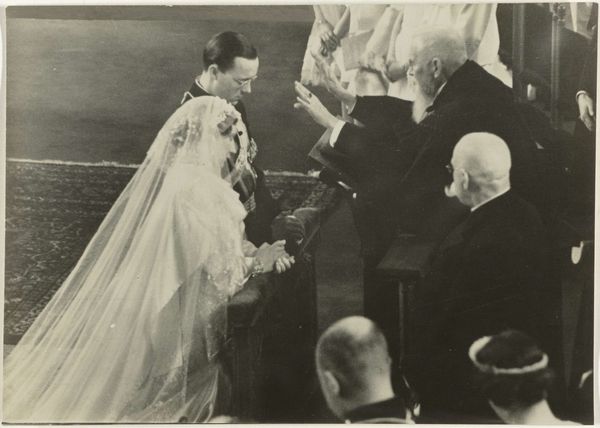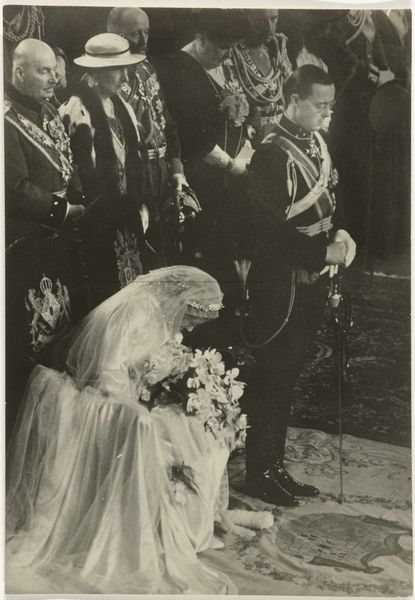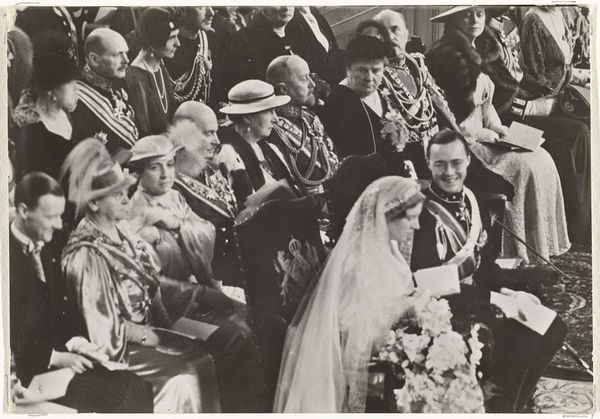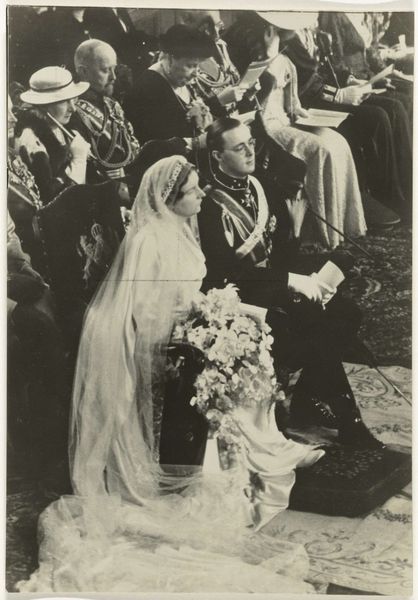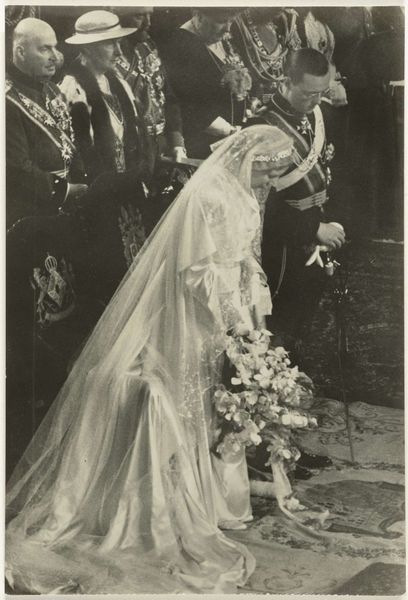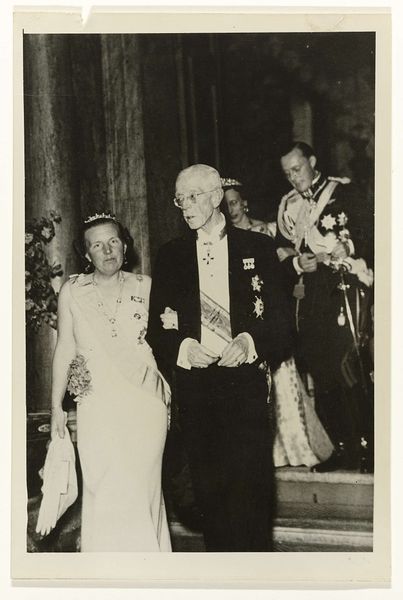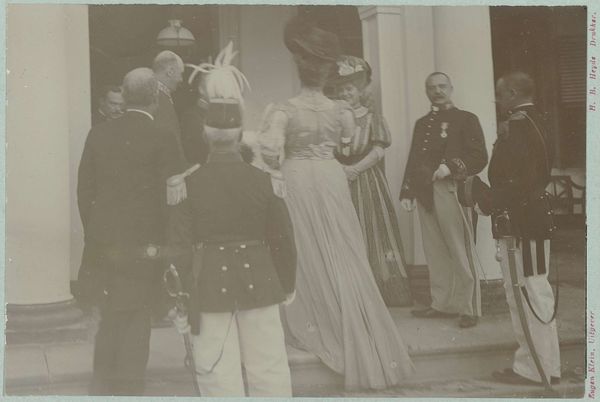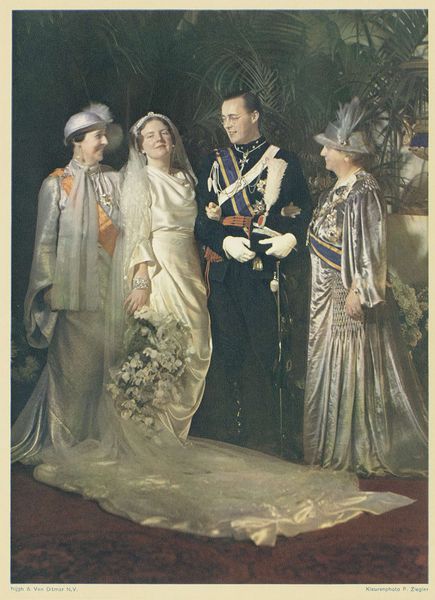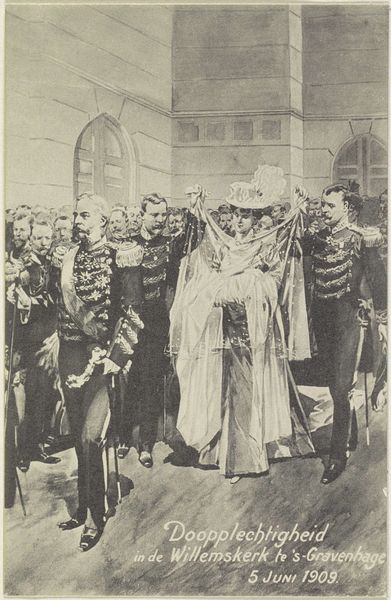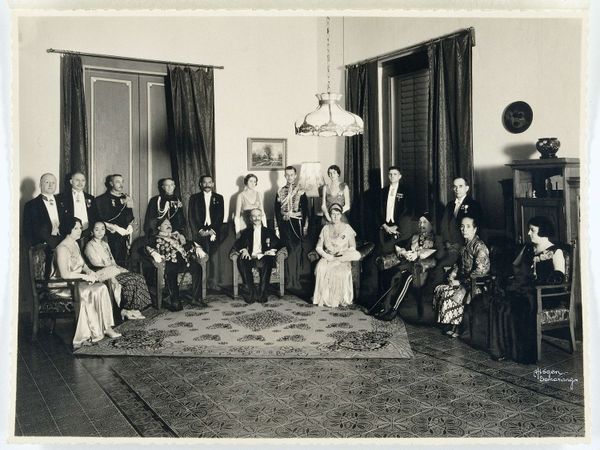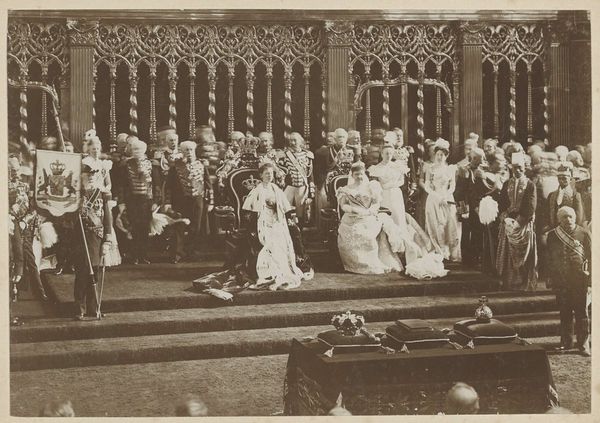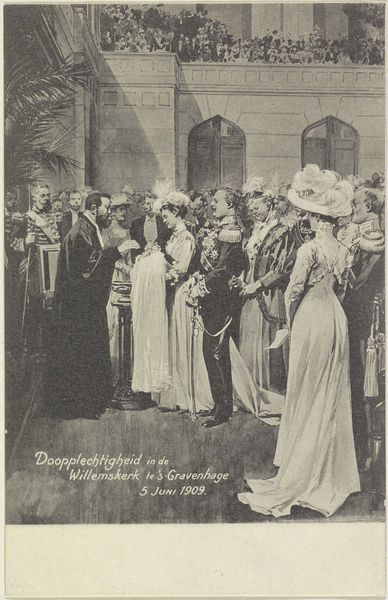
Inzegening van het huwelijk van prinses Juliana en prins Bernhard in de St. Jacobskerk in Den Haag, 7 januari 1937 Possibly 1937
0:00
0:00
print, photography, gelatin-silver-print
#
portrait
#
wedding photograph
# print
#
wedding photography
#
photography
#
historical photography
#
gelatin-silver-print
#
history-painting
#
realism
Dimensions: height 148 mm, width 102 mm
Copyright: Rijks Museum: Open Domain
Curator: This gelatin silver print by Erich Salomon captures the wedding of Princess Juliana and Prince Bernhard in the St. Jacobskerk in The Hague, likely taken on January 7th, 1937. Editor: It's striking how solemn it feels, almost devoid of the joy I’d expect. The grainy texture adds to a feeling of stark formality, which emphasizes the somber expressions on everyone’s faces. It really puts the spotlight on what Royal expectations were at that time. Curator: Exactly. Salomon was a master of capturing unguarded moments of European leaders, even within formal contexts. This image showcases the socio-political importance of royal weddings during the interwar period. It’s a clear depiction of tradition and duty, as well as continuity of Dutch Monarchy. Editor: I wonder though about the expectations imposed upon Princess Juliana. Marriage, especially within royal circles, was rarely, if ever, about individual desires, more about securing power, bloodlines, and maintaining appearances. And let's remember who she's marrying! Prince Bernhard's Nazi associations must be addressed when framing this photo within its historical context. Curator: It’s precisely this kind of layered historical context that gives the image such weight. Salomon was keenly aware that the photojournalism of that time was, in fact, establishing visual and political records for posterity. Even small details like the ornate military garb of Prince Bernhard tells a silent story about the rise of militarism in Europe at this period. Editor: It highlights that intersectional point – how seemingly personal events are almost always irrevocably political. Here, it's literally embodied by the Prince's regalia and Juliana’s almost ethereal veils. Curator: Indeed. Salomon used the conventions of realism to document historical and social truths through photography. A photograph becomes a primary source of cultural record. Editor: Looking at it today makes me ponder the cost of such a highly visible, highly regulated union. Curator: Yes, it's a potent visual reminder of how the private and the public intertwine, with political ramifications, and how crucial is the role of photography in registering key historical moments for decades to come. Editor: Right, and maybe question, who gets to shape that visual record, and for what agenda? This is definitely an entry point for some difficult dialogues.
Comments
No comments
Be the first to comment and join the conversation on the ultimate creative platform.
